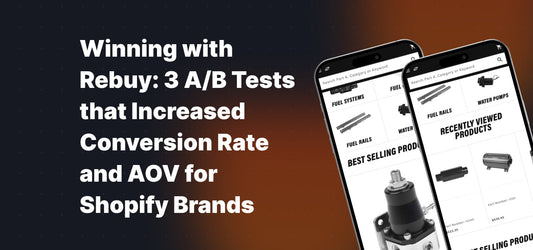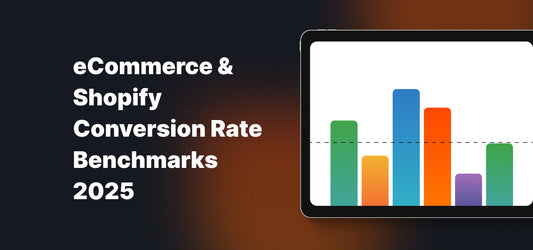Table of Contents
Get useful eCommerce stuff
Ever wondered how some companies have customers lining up at the door while others can't seem to get the turnstiles moving? At Blend, our focus on CLV allows us to grasp the significant importance of customer retention and loyalty. This emphasis enables us to prioritise customer satisfaction, allocate resources efficiently, and foster long-lasting relationships with our valued clients. Get ready to uncover the well-kept secrets that can turn your profits from drab to fab and win the hearts of your customers for life.
Hold tight as we take you on a rollercoaster ride through the captivating world of Customer Lifetime Value (CLV)!

Decoding Customer Lifetime Value: Understanding the Metric
CLV is a fundamental metric that holds significant importance for businesses aiming to optimise their marketing strategies and boost overall profitability. It predicts the net profit a company can expect from a single customer over the entire duration of its relationship with the business. In calculating CLV, several vital factors, such as customer acquisition costs, repeat purchase rates, average order value, and customer retention rates, come into play.
By analysing CLV, businesses gain valuable insights into the long-term revenue potential of individual customers. With this knowledge, companies can identify and prioritise their most valuable customers, tailor marketing efforts to maximise customer engagement and loyalty and allocate resources effectively to drive sustainable growth. Understanding Customer Lifetime Value empowers businesses to make informed, data-driven decisions, fostering strong and lasting customer relationships, thereby ensuring a prosperous future in a highly competitive marketplace.
Mastering the Numbers: How to Calculate Customer Lifetime Value
Calculating Customer Lifetime Value can be approached using various methods, each tailored to the specific data available and the complexity desired. Here are three common ways to master the numbers and calculate CLV:
- Historical CLV: This method involves looking back at past customer behaviour. Take a group of customers who have been with your business for a significant period and calculate the total revenue generated from them during that time. Then, divide this revenue by the number of customers in the group to get the average historical CLV. While simple, this approach may not consider future customer behaviour changes.
- Cohort Analysis: Cohort analysis groups customers who signed up within a specific time frame, usually a month or a quarter. By comparing cohorts' spending patterns over time, you can predict future CLV more accurately. For example, you can track the revenue generated by customers who signed up in January over the first six months and project how much they might spend over their entire lifetime.
- Predictive Modeling: This approach uses data analytics and machine learning to build a model that predicts CLV based on customer attributes and behaviours. Businesses can create a more sophisticated and accurate CLV estimate by factoring in customer demographics, purchase history, engagement metrics, and other relevant data. Predictive modelling allows for more dynamic insights, considering different scenarios and customer segments.

Harnessing the Power of CLV: Impact on Your Business
CLV has significant relevance in various aspects of business and can influence its success. Let's discuss some key impacts of CLV on a company:
Strategic Decision-Making: CLV helps businesses make informed strategic decisions. Companies can allocate resources more effectively by knowing the potential value a customer can bring over time. For example, if a segment of customers has a high CLV, the business can invest more in marketing, customer service, and loyalty programs targeting that segment to maximise returns.
Customer Acquisition and Retention: Understanding CLV enables businesses to balance customer acquisition and retention efforts. Instead of focusing solely on acquiring new customers, companies can place equal emphasis on keeping existing customers satisfied and loyal, as they have the potential to generate more revenue over the long term.
Personalisation and Customer Experience: CLV insights can help create more personalised customer experiences. When businesses understand the value of individual customers, they can tailor marketing messages, offers, and products to meet specific needs and preferences, leading to higher customer satisfaction and loyalty.
Pricing Strategies: CLV allows businesses to adopt dynamic pricing strategies. Customers with higher CLV can be offered special discounts or incentives, encouraging repeat purchases and fostering loyalty. On the other hand, customers with lower CLV can be encouraged to upgrade or purchase additional products or services to increase their value.
Customer Segmentation: Businesses can use CLV to segment their customers based on value. This segmentation helps identify high-value, low-value, and potential churn-risk customers. Tailored marketing efforts can then be directed at each segment, maximising the overall return on investment.
Churn Prediction and Prevention: CLV can aid in predicting customer churn. By analysing historical data, businesses can identify patterns or signals that suggest a customer might leave. With this knowledge, proactive steps can be taken to prevent churn, such as targeted retention offers or improved customer support.
Long-Term Business Sustainability: Focusing on CLV ensures a more sustainable business model. By cultivating long-term customer relationships and maximising their lifetime value, companies can reduce reliance on short-term gains and maintain steady revenue streams.
CLV provides evidence of a well-thought-out business strategy considering long-term growth and profitability. Harnessing the power of CLV is relevant and crucial for businesses to thrive in today's competitive landscape. By incorporating CLV insights into various aspects of decision-making, companies can build stronger customer relationships, increase profitability, and establish a more sustainable and successful business.
Methods for Optimising & Maximising Customer Lifetime Value
Here are five primary methods for optimising Customer Lifetime Value for businesses:
- Focus on Customer Experience: Prioritise delivering exceptional customer experiences by providing outstanding service, addressing customer needs promptly, and continuously improving based on feedback.
- Customer Retention Programs: To achieve customer-centric goals, implement loyalty programs, VIP tiers, and subscription models that incentivise repeat purchases and encourage long-term commitment. Partnering with companies like LoyaltyLion helps to enhance customer engagement and build enduring relationships based on mutual value.
- Upselling and Cross-Selling: Identify opportunities to upsell or cross-sell relevant products or services to existing customers, increasing their CLV through additional purchases.
- Proactive Customer Support: Prioritise proactive anticipation and resolution of customer issues to elevate customer satisfaction and cultivate long-term loyalty. By leveraging advanced customer support tools like Gorgias, we ensure swift and efficient handling of customer inquiries, providing a seamless and delightful experience that leaves a lasting positive impression on our valued clientele.
Understanding and optimising Customer Lifetime Value is crucial for businesses aiming for sustainable profits and long-term loyalty. By leveraging CLV insights, companies can make informed decisions, prioritise customer experiences, and implement effective strategies for growth. Embracing CLV empowers businesses to build lasting customer relationships, ensure profitability, and thrive in a competitive market.
Ready to unlock the power of Customer Lifetime Value and take your business to new heights? Don’t hesitate to contact us here at Blend and discover how we can help you.








